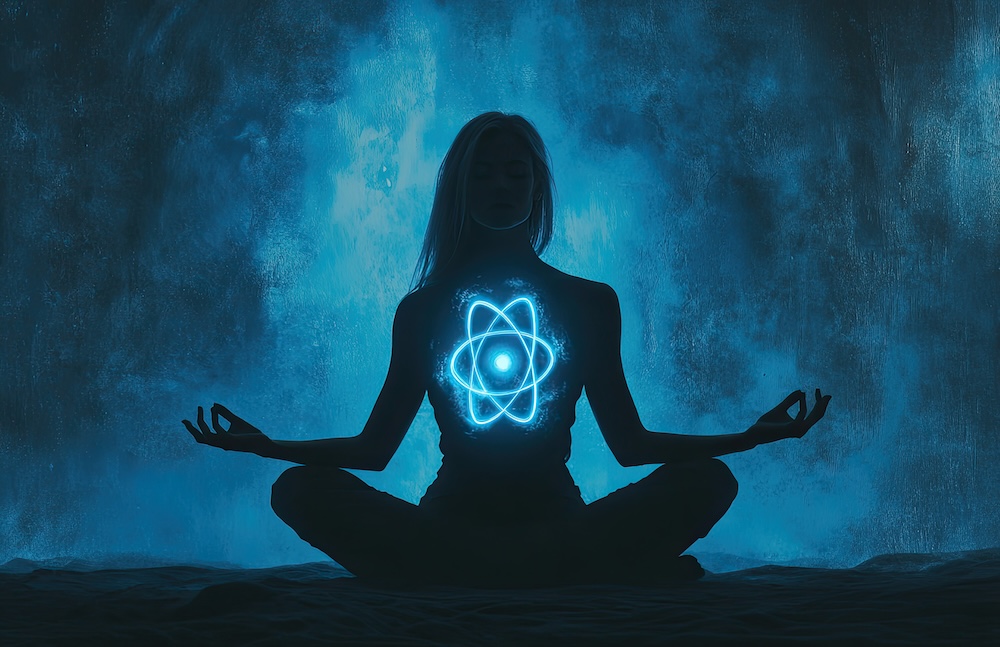Imagine a tightrope walker at a circus, skillfully maintaining balance to avoid falling. Inside your body, a similar balancing act takes place every moment, but instead of a performer, your cells are managing what’s known as redox reactions. Though the term may sound complex, it simply combines two processes: reduction and oxidation.
These reactions are essential for your health, allowing you to move, think, and rest. Every time you consume food, your body converts its stored energy into a usable form through redox processes. But to truly grasp how this works, it’s important to understand the role of electrons.
The Role of Electrons
Electrons are tiny particles orbiting atoms, which serve as the fundamental building blocks of everything—including your body, water, and air. These particles carry a negative charge, much like a tiny battery. When one atom or molecule transfers an electron to another, it essentially hands over a portion of that negative charge, setting off a chain of reactions that drive essential bodily functions.
Though invisible, electrons play a critical role in your survival. They facilitate chemical reactions that keep you alive, enabling everything from digestion to muscle movement. Without this constant flow of electrons, even the most basic actions, like walking or making decisions, would be impossible.
How Redox Reactions Keep You Balanced
Redox reactions operate as a precisely coordinated system, where one molecule donates electrons while another receives them. If a molecule gains electrons, its charge decreases, meaning it has been reduced. Conversely, a molecule that loses electrons becomes more positively charged and is considered oxidized. This process always occurs in pairs—when one molecule donates, another must accept.
When the electron transfer process speeds up or goes off track, it can harm your cells. Your body, however, has a built-in regulatory system to ensure this process stays in harmony. This system, often referred to as your “redox status,” is a measure of how efficiently your cells manage electron exchanges.
By learning the basics of redox, you gain insight into how your body generates energy and defends itself from damage. Understanding these processes is akin to mastering fundamental concepts in math or language—it lays the foundation for grasping bigger health concepts. Making informed choices about nutrition, sleep, and exercise directly supports your redox balance and overall well-being.
A Simple Look at Redox Reactions
Think of a group of friends passing water balloons around on a hot day. Each balloon represents an electron with a negative charge. If someone hands you a balloon, you’ve gained a negative charge (reduction). If you pass it to someone else, you’ve lost a negative charge (oxidation). This exchange is continuous—just as in your body, one molecule must always pass an electron while another receives it.
This process is essential because it fuels all bodily activities, from speaking to running. However, if too many electrons end up in the wrong place, they can cause oxidative stress—akin to bursting water balloons soaking everything uncontrollably. To prevent this, your body uses molecules like NAD+ and NADH, which regulate electron flow, preventing chaos and maintaining efficiency.
The Importance of NAD+
Think of NAD+ and NADH as taxis transporting electrons throughout your body. NAD+ is like an empty taxi, ready to pick up passengers (electrons), while NADH is a full taxi, carrying electrons to their destination. Once delivered, NADH transforms back into NAD+, ready to transport more electrons.
NAD+ is more than just a transporter—it is one of the most crucial molecules in your body. Without it, cells wouldn’t be able to generate energy efficiently. Even with a perfect diet, your body can’t convert food into usable energy without sufficient NAD+. In fact, a sudden loss of NAD+ would be catastrophic, shutting down essential cellular functions almost instantly.
Beyond energy production, NAD+ plays a key role in DNA repair, cellular communication, and immune defense. Enzymes responsible for fixing DNA damage, like PARPs, depend on NAD+ to function. Likewise, NAD+ enables cells to communicate and coordinate their actions effectively. Maintaining high NAD+ levels is critical for overall health, as low levels can lead to sluggish energy production and weakened cellular repair mechanisms.
Maintaining NAD+ Levels and Avoiding Reductive Stress
To keep NAD+ functioning optimally, you must avoid factors that disrupt mitochondrial health. Environmental toxins, poor diet, and harmful substances can interfere with the electron transport system, causing what’s known as reductive stress—a situation where too many electrons get stuck, preventing efficient energy production.
When mitochondria are damaged, electron transport slows down. The electron carriers (NADH) remain full, unable to offload their electrons, which depletes NAD+ levels. Imagine a city where taxis are jammed in traffic, unable to pick up new passengers—this inefficiency disrupts the entire system. To prevent this, minimizing exposure to mitochondrial toxins and maintaining a healthy lifestyle is essential.
Other Key Players in Redox Balance
While NAD+ and NADH are major players, several other molecules contribute to electron transport and cellular function:
- NADP+ and NADPH: These molecules assist in building essential cellular components and neutralizing harmful free radicals. NADPH acts like a repair crew, fixing damage and preventing cellular breakdown.
- FAD and FADH2: These function as delivery trucks, transporting electrons to mitochondria for energy production. When nutrient intake is inadequate, these molecules struggle to keep up, leading to energy imbalances.
- Glutathione (GSH and GSSG): This antioxidant acts like a cleaning crew, removing harmful substances from cells. A well-functioning glutathione system protects against oxidative stress and cellular aging.
- Lactate and Pyruvate: These compounds play a crucial role in energy recycling. When energy demands rise—such as during intense exercise—pyruvate converts to lactate to maintain energy flow. Once exertion subsides, lactate is recycled back into pyruvate to sustain long-term energy balance.
- Ketone Bodies (Acetoacetate and Beta-Hydroxybutyrate): These serve as backup fuel when glucose is scarce. When carbohydrate intake is low, the body shifts to fat metabolism, generating ketones to keep the brain and muscles energized.
Bringing It All Together
Redox reactions are the foundation of your body’s energy system, continuously shuttling electrons to sustain life. By ensuring a steady supply of NAD+, avoiding mitochondrial toxins, and maintaining a balanced diet, you can optimize this system and improve overall health.
Book your Cellular Health Assessment and see what we recommend to best support your health journey with proper supplements, nutrition, and detox.







